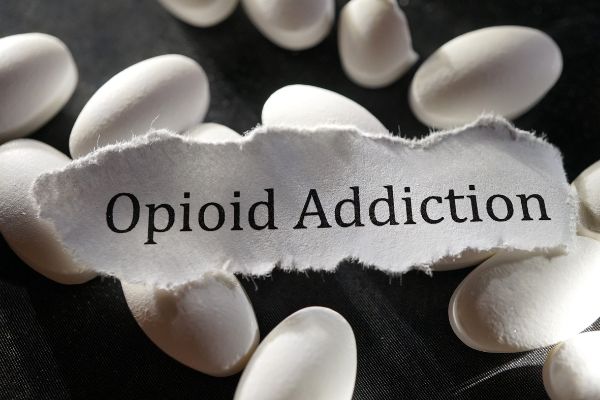In 2020, there were 40.3 million Americans over the age of 12 who met the criteria of having a drug addiction, nearly 15% of the population. These high numbers are the result of various circumstances that have converged to create a health crisis that doesn’t show any signs of slowing down: People are more stressed than ever (re: COVID-19 pandemic, inflation, world affairs, American politics, gas prices) and the potency of drugs keeps getting stronger.
At the heart of the addiction epidemic are narcotics, a category of drugs that includes both legal and illegal varieties–and some of which are the most addictive substances on the planet. They account for up to 80% of all drug overdose deaths, approximately 50,000 a year. Are all narcotics addictive or is it only certain ones that drive these scary statistics?
What Are Narcotics? [DEA Definition]
The term stems from the Greek word “to make numb” but there are a few definitions of what a narcotic is floating around. Some use it negatively to refer to all drugs of any kind (an international assembly held in 1961 called the Single Convention on Narcotic Drugs was focused on cannabis and cocaine), but this definition is less prevalent. Others, primarily those in the field of medicine, use narcotic as a neutral term to refer to drugs with pain-relieving or numbing properties, or that put users in a state of narcosis.
However, most modern definitions of narcotics align more closely with the U.S. Drug Enforcement Administration’s, that a narcotic is any type of opium derivative, pharmaceutical or illicit, natural or synthetic. In short, narcotic is just an alternative name for opioids.
Narcotic Drugs List
Narcotics include natural, semi-synthetic, and synthetic derivatives of the poppy plant. Many of these types of narcotics are likely to sound familiar to you as both illegal and legal varieties of opioids are widely used. However, there are likely many more that you haven’t heard of (there are over 100 types of prescription opioids alone)! Below are the most common narcotics:
- Buprenorphine
- Codeine
- Fentanyl
- Heroin
- Hydrocodone
- Hydromorphone
- Meperidine
- Methadone
- Morphine
- Oliceridine
- Oxycodone
- Opium
- Tramadol
Some of these narcotics are used alone, but many of these substances are combined with other chemical ingredients to create medications like suboxone. Prescription narcotics are blamed for having resulted in the deadly third wave of the opioid epidemic that is currently gripping the nation.
Are All Narcotics Addictive?
Yes, all narcotics have the potential to be addictive. Some carry greater addiction potential than others, but opioids are powerful mind-altering drugs that might result in addiction. Heroin is a narcotic and is considered to be the most addictive drug in existence. According to SAMHSA’s 2020 National Survey on Drug Use and Health report, there were 2.7 million people 12 and older who had opioid use disorder in 2020 (approximately 1% of the U.S. population).
Illicit synthetic opioids are often the most potent and therefore, are the most addictive. Fentanyl, for example, can be 100x more potent than morphine and has significantly higher addiction potential.
Why are narcotics addictive?
To better understand why narcotics are so addictive is to look at how addiction happens in the brain in general. To summarize a very complex situation, addiction occurs when brain receptors become used to a certain foreign substance activating them and eventually stops producing the naturally occurring neurotransmitters the brain would normally produce to activate those receptors. This creates what’s known as physical dependence. When a person gets to this stage but tries to stop using drugs, they’ll experience unpleasant and sometimes dangerous side effects known as withdrawal.
People often inadvertently get themselves in this situation because drugs have a powerful means of encouraging their repeated use. While drugs are activating brain receptors and gearing the brain towards physical dependence, they simultaneously activate the pleasure or reward centers in the brain. Your brain likes pleasure and will actively seek out things that make it feel good. This is what ends up developing into psychological dependence, and is what’s most responsible for causing drug users to develop a tolerance that eventually gives way to full-blown addiction.
Narcotics are extremely adept at both aspects of the addiction equation. They trigger the release of high levels of endorphins so strongly that addiction can occur within a single use. Many narcotics activate the reward centers of the brain more so than other types of drugs.
Getting Help for a Narcotics Addict
If you or a loved one is struggling with an addiction, you’re not alone. There are thousands of Narcotics Anonymous groups across the country helping people just like you. Find an NA group in your city today.

Thank you so much for not making it difficult to find a meeting for my daughter ❤️💯. Tomorrow is going to be a great day 👏👏👏👏thank you Colby